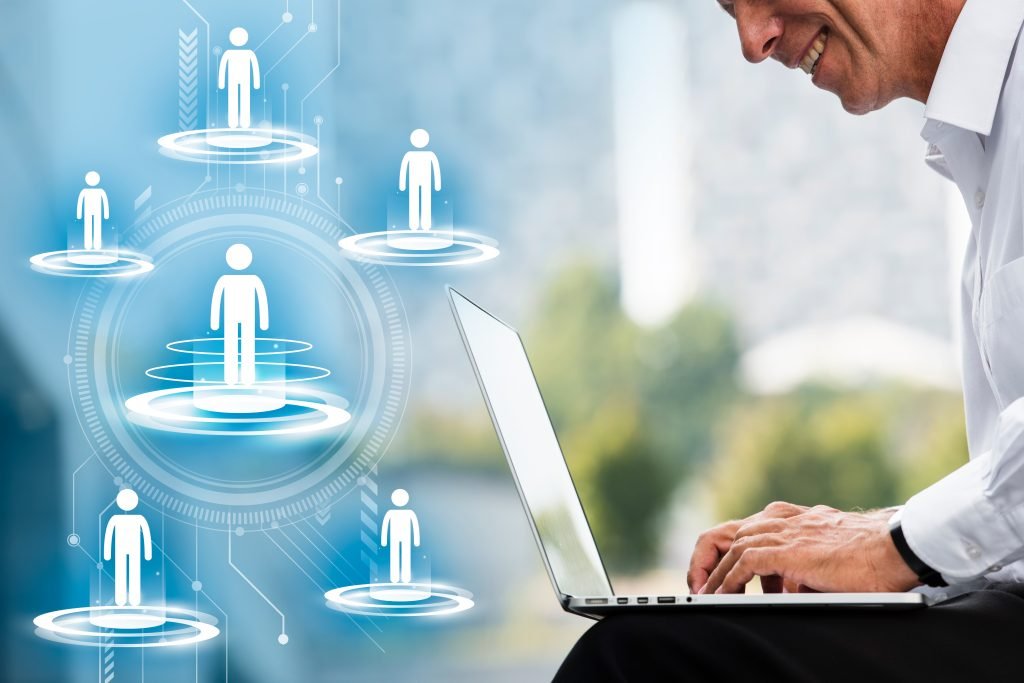The business world moves quickly, and Human Resources (HR) teams must handle many tasks. HR workers are expected to handle many jobs quickly and well, from hiring and training new employees to keeping them engaged and managing their performance. To keep up with these needs, many businesses are using digital tools to make their HR tasks easier.
HR functions are embracing generative artificial intelligence (GenAI) and predictive analytics tools to enhance employee experiences and talent decisions. A significant number of CHROs (61%) plan to invest in AI to streamline HR processes in 2024.
In this blog, we’ll talk about the idea of building a digital HR environment and how combining different tools can make things run more smoothly and boost productivity.
YOU MAY ALSO LIKE: 4 core HR areas where adoption of artificial intelligence (AI) is increasing
Getting to Know the Digital HR Ecosystem
It’s important to understand what it means before discussing the specifics of creating a digital HR environment. The network of software, apps, and tools that HR teams use to run their jobs is called the “digital HR ecosystem.” This environment includes many tools, such as application tracking systems, salary software, performance management platforms, employee involvement apps, learning management systems, and more.
The main goal of a digital HR environment is to organize and automate HR tasks, which will reduce human work, mistakes, and general inefficiency. By using technology, HR workers can spend less time on routine jobs and more time on strategic projects that help the company grow and succeed.
Benefits For Integration
Each HR automation software can be useful on its own, but they really shine when they’re all working together in a single environment. Integration allows data to move smoothly between systems, so you don’t have to enter data by hand, and there is less of a chance of making mistakes. Integration also gives you a bigger picture of your employees’ information, which helps you make better decisions and gain more insights.
Important Parts of a Digital HR Ecosystem
To create a strong digital HR environment, you must carefully think about the different existing tools and platforms. The exact parts may be different based on the goals and interests of the company, but here are some important HR trends to think about:
- Human Resource Information System (HRIS): At the core of the digital HR ecosystem is the HRIS, a centralized database that houses employee information, including personal details, employment history, performance evaluations, and more. An effective HRIS is the foundation for integrating other HR tools and streamlining processes.
- Applicant Tracking System (ATS): An ATS automates the recruitment process, from posting job openings to screening candidates and scheduling interviews. Integrating the ATS with the HRIS ensures a seamless transition of candidate data into the employee database upon hiring.
- Payroll Software: Payroll software automates calculating and disbursing employee salaries, taxes, and benefits. Integrating payroll software with the HRIS ensures accurate and timely processing of payroll data.
- Performance Management Platform: A performance management platform facilitates goal setting, feedback exchange, and performance evaluations. Integrating this platform with the HRIS allows for a comprehensive view of employee performance data and alignment with organizational objectives.
- Learning Management System (LMS): An LMS enables organizations to deliver and track employee training and development initiatives. Integration with the HRIS ensures that employee training records are up-to-date and accessible for performance evaluations and career development planning.
- Employee Engagement Tools: Employee engagement tools, such as pulse surveys, feedback platforms, and recognition programs, help organizations measure and improve employee satisfaction and morale. Integrating these tools with the HRIS provides HR professionals valuable insights into employee sentiment and engagement levels.
- Communication and Collaboration Platforms: Communication and collaboration platforms, such as intranet portals and messaging apps, facilitate employee communication and collaboration. Integration with the HRIS ensures that employee directories and organizational charts are kept up-to-date.

Best Practices for Integration
Adding HR tools can be very helpful, but you need to be careful about how you do it to ensure it works. Here are some of the best ways to set up a modern HR ecosystem:
- Define Clear Objectives: Before embarking on the integration process, clearly define your objectives and priorities. Determine which processes you want to streamline and which tools best support your goals.
- Choose Compatible Solutions: Select HR tools that are compatible with each other and can seamlessly exchange data. Look for vendors that offer robust APIs and integration capabilities.
- Standardize Data Formats: Establish standardized data formats and protocols to ensure consistency and compatibility across integrated systems. This will facilitate smooth data transfer and minimize the risk of errors.
- Involve Stakeholders: Involve key stakeholders, including HR professionals, IT staff, and end-users, in the integration process from the outset. Solicit feedback and input to ensure that the chosen tools meet the needs of all stakeholders.
- Provide Training and Support: Offer training and support to employees using the integrated HR systems. Ensure they understand how to navigate the new tools and effectively leverage their full capabilities.
- Monitor and Evaluate Performance: Continuously monitor integrated HR systems’ performance and gather user feedback. Identify areas for improvement and make adjustments as needed to optimize functionality and user experience.
- Stay Agile: The HR technology landscape constantly evolves, with new tools and innovations emerging regularly. Stay agile and adaptable, and be prepared to adjust your digital HR ecosystem to incorporate new technologies and meet changing business needs.
Conclusion
Building a digital HR environment is important for companies that want to stay competitive and handle their human capital well in this digital age. By combining different HR technologies and tools, businesses can simplify tasks, make them more efficient, and improve employee work experience. However, for integration to work, it needs to be carefully planned, all stakeholders must be involved, and all stakeholders must be committed to ongoing review and improvement. Companies can create a successful digital HR environment that helps them do well in a world where business is getting more complicated by following best practices and studying models from real life.
On the other hand, if you’re looking for a job, there are multiple digital tools that can help! Keep reading iTMunch to learn more.
YOU MAY ALSO LIKE: Machine learning in human resources: how it works & its real-world applications
Read the latest HR tech trends and bites on iTMunch!
Feature Image Source: Photo by creativeart
Image 1 Source: Photo by freepik





